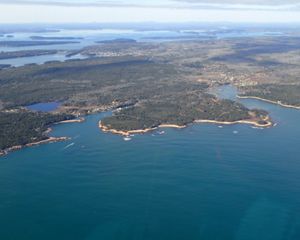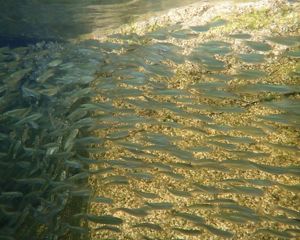Conditions
Trails are located on old woods roads and range from easy to moderately strenuous. Ticks are common, so please dress accordingly and check yourself after leaving the preserve.
Preserve Guidelines
- Trails are marked for their designated uses at each intersection
- Please stay on the trails and respect areas marked as private
- No collecting of plants or animals
- No pets
- Carry out all litter
- No fires, smoking or camping
What You’ll See
The strange and beautiful forests of this preserve are primarily pitch pine and scrub oak underlain by lowbush blueberry and woodland sedge. As many as 11 species of rare butterflies and moths that feed on the barrens vegetation have been documented on the preserve, including the pine barrens buckmoth. Whip-poor-will and common nighthawk, both ground-nesting birds in decline throughout their range, nest in open areas within the pine barrens.
The topography of Waterboro Barrens originates from glacial outwash and features debris left behind by retreating glacial ice resulting in kettlehole heaths, hillsides covered in towering old-growth pitch pines, and moraines (glacial hills) covered in dense stands of scrub oak. There is also a leatherleaf bog, a small gorge, black spruce swamps, and miles of frontage on three ponds and the Little Ossipee River.
The Nature Conservancy has recently initiated a prescribed burning program at Waterboro Barrens as a management and restoration tool. Visitors may encounter recently burned areas that likely result from our management program. In addition, some areas have recently been thinned to reduce flammable fuels and provide firebreaks between the preserve and neighboring communities.


